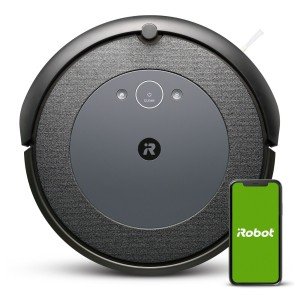Three Greatest Moments In Robot Cleaner History
The Rise of Robot Cleaners in Commercial Spaces
Introduction
Recently, developments in innovation have generated automation in various sectors, incorporating everything from producing to client service. One notable evolution in this arena is the introduction of robot cleaners in commercial areas. These automated cleaning devices have transformed the method organizations approach cleanliness and upkeep, providing a service that is not only efficient but also cost-efficient. As companies seek to enhance their operational performance while keeping high requirements of hygiene, robot cleaners have actually become an important part of contemporary commercial environments.
Comprehending Robot Cleaners
Robot cleaners are autonomous devices geared up with sensors, electronic cameras, and artificial intelligence that enable them to browse and tidy different surface areas without human intervention. They come in various types and functionalities, catering to diverse commercial requirements. Here's a summary of the main kinds of robot cleaners:
- Autonomous Vacuum Cleaners: These devices are developed for effectively vacuuming floors, particularly in environments such as offices, retail areas, and warehouses.
- Scrubbing Robots: These robots are customized for difficult surface areas, employing scrubbing and cleaning solutions to take on difficult discolorations and gunk.
- Disinfection Robots: Equipped with UV-C light or chemical sprayers, these robots concentrate on disinfecting locations, substantially minimizing the presence of hazardous bacteria and viruses.
Table 1: Types of Robot Cleaners and Their Features
Kind Of Robot Cleaner
Main Function
Ideal Environment
Secret Features
Autonomous Vacuum Cleaner
Floor vacuuming
Workplaces, Retail Spaces
Sensors for browsing challenges, scheduling
Scrubbing Robot
Difficult surface area cleaning
Warehouses, Hospitals
Dual-brush system, adjustable settings
Disinfection Robot
Surface area disinfection
Health care settings
UV-C or electrostatic spraying innovation
Benefits of Using Robot Cleaners in Commercial Spaces
The combination of robot cleaners in commercial environments uses a myriad of benefits:
Increased Efficiency
Robot cleaners operate autonomously, allowing them to tidy locations at any time of the day or night without the requirement for human guidance. This effectiveness is particularly beneficial for large centers that experience high foot traffic, as these robots can cover more ground in less time.
Consistent Cleaning Quality
Robot cleaners are created to carry out consistently, operating on pre-programmed settings customized to the specific requirements of the environment. This guarantees a reputable standard of cleanliness throughout the facility.
Cost-Effectiveness
While the preliminary investment in robot cleaners might be considerable, the long-lasting savings can be significant. Robot cleaners reduce the need for a large cleaning personnel, minimize human errors, and can reduce costs associated with cleaning supplies.
Improved Safety
In settings like health centers and laboratories, keeping hygiene is crucial. Robot cleaners decrease human contact with possibly hazardous materials or locations, consequently enhancing total safety.
Eco-Friendliness
Lots of modern robot cleaners are developed with sustainability in mind. They effectively use water and cleaning items, often equipped with settings that lower waste. This adds to a greener method to cleaning in commercial spaces.
Secret Considerations Before Implementation
While the advantages are significant, services must think about various aspects before buying robot cleaners:
Space Design: The layout of the facility can affect a robot's efficiency. Locations with multiple challenges might require more sophisticated models geared up with sophisticated navigation systems.
Maintenance: Although robot cleaners are normally low-maintenance, they do require periodic checks to ensure ideal efficiency. Having a devoted service technician or service contract may be essential.
Software Updates: The technology behind robot cleaners evolves rapidly. Keeping the software up to date is vital for preserving functionality and security.
Integration with Current Systems: Understanding how robot cleaners can be incorporated into existing cleaning protocols is vital to maximizing their potential benefits.
Case Studies: Successful Implementation of Robot Cleaners
Case Study 1: A Large Retail Chain
A large retail chain executed autonomous vacuum across its various stores. The robots enabled cleaning to occur throughout hours of operation, which considerably decreased labor costs and enhanced overall shop tidiness. The chain reported a 25% boost in customer fulfillment, directly attributing it to the boosted shopping environment.
Case Study 2: A Local Hospital
A healthcare facility released disinfection robots to deal with extensive cleaning regimens, specifically in waiting locations and running rooms. These robots efficiently mitigated infection dangers while allowing cleaning staff to focus on other pushing jobs. The medical facility noted a significant decrease in post-surgical infection rates, verifying the efficiency of robotic disinfection.
Frequently Asked Questions About Robot Cleaners in Commercial Spaces
Q1: Are robot cleaners appropriate for all commercial environments?
- A: While robot cleaners are flexible, their suitability may vary based upon area design and cleaning requirements. It is vital to assess the specific requirements and layout of your commercial space.
Q2: How much do robot cleaners cost?
- A: The price of robot cleaners can vary extensively based on their functions and abilities. Fundamental models may start at ₤ 1,000, while advanced models can cost upwards of ₤ 10,000.
Q3: How often do robot cleaners require upkeep?
- A: Robot cleaners generally require minimal upkeep. Routine checks and software application updates are suggested, while parts like filters might need changing based upon usage.
Q4: Can robot cleaners work along with human staff?
- A: Yes, robot cleaners are created to complement human personnel rather than replace them. best robot vacuum for large house can take over regular cleaning jobs, allowing staff to focus on more complex duties.
The commercial cleaning landscape is witnessing a substantial transformation through making use of robot cleaners. These gadgets complement human effort, enhance tidiness, and add to cost savings, making them a worthy investment for companies wanting to enhance their functional performance. As innovation continues to develop, the capabilities of robot cleaners are most likely to expand, further solidifying their role in maintaining cleanliness in commercial areas. With careful factor to consider of individual needs and an ingenious approach, services can welcome this technology to develop a cleaner, much safer, and more effective working environment.
